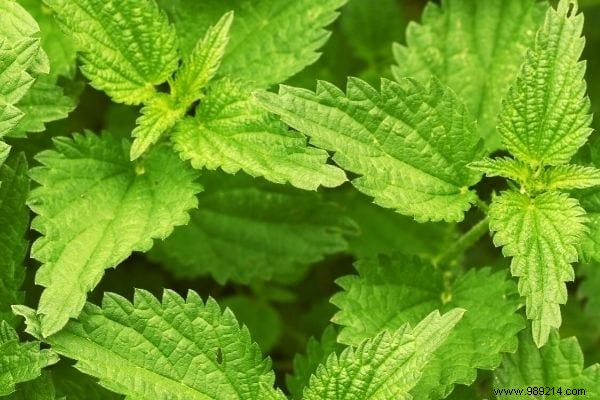
Do you have weeds in your garden or vegetable patch?
I explain here how to turn them into a free meal!
These herbs will finally have a use at home.
And I swear you will look at them differently.
Because in the end, they are not that bad.
Do you know the other good news?
No more bending over to rip them off or putting chemicals on them to get rid of them.
You just have to know how to cook them, and I give you my easy recipes here.
Here are 10 garden weeds that everyone should know how to cook. Watch:


It is one of the best known and most used "weeds".
Do you know why?
Because nettle is excellent for your health .
Rich in vitamins A and C, minerals, calcium, potassium and iron.
In soup, pie, quiche or pesto, nettle can be cooked in all sauces.
Some even make ravioli with it, it's excellent.

Everyone knows this pretty yellow spring flower.
But did you know that everything is eaten in the dandelion ?
Stem, leaves or flowers, everything is eaten.
Including dandelion buds which you can make into an omelette as explained here.
The leaves and young shoots are eaten in salads.
It is also a salad very popular with cooks!
It can also be made into soup, or even a filling for quiches. Be careful, the taste is quite pronounced.
As for the flowers, they serve as a base for dandelion honey or dandelion jelly.
It's very good for your health, I recommend it.

Burdock looks a bit like thistle, but it belongs to the artichoke family and has a very mild carrot flavor.
Thus, like the artichoke, burdock is recommended to purify the liver and fight against skin problems.
Burdock can be eaten raw or cooked.
I advise you to cook the leaves in 2 different waters to avoid bitterness.
The heart of the stalk can be eaten raw, especially in salads.
With an Asian sauce (sesame or soybean oil), it's super good.

Cardamine is a "weed" that is often found in gardens.
It has blue-purple flowers and tastes like watercress.
As it is rich in vitamin C , it is perfect for people with anemia.
It contains 3 times more than a lemon, that's to say!
Everything is eaten in cardamine.
But be aware that its taste is quite strong.
It is therefore advisable to mix it in a salad (see recipe here) or to cook it in pesto, soup or vinaigrette for example.

These pretty little white flowers that come out in the spring are edible...
...in addition to being decorative!
Young shoots (leaves or stems) are eaten like vegetables, in salads, steamed or boiled with a drizzle of olive oil.
It can also be used as a filling for a quiche or in fromage blanc.

It is also called "wild sorrel", but make no mistake, it is not a clover despite its resemblance to it.
With its lemony taste, it perfectly enhances salads, an omelet or mashed potatoes.
Sheared over steamed vegetables, it gives a little pep to your dishes.
Oxalis is also drunk as an herbal tea to stimulate digestion .

Mugwort is known for its stimulating properties since ancient times.
It is a cousin of absinthe which it somewhat resembles.
It is consumed in herbal tea to better digest or to flavor beers.
It is also used in salads, puff pastry biscuits or in sauces for roasts.

Very invasive, purslane invades our gardens.
It's not so bad, because it is a plant that can also be cooked.
And I can tell you that she is excellent.
In a salad, it's a delight. There are other recipes to discover here.

Another "weed" full of virtues.
And that's good, this plant grows everywhere and very easily.
Plantain can be cooked in salads, soups, as a garnish for ravioli and even as spinach.

It often grows in fallow gardens.
It is also called "fox tail".
Its leaves are cooked like spinach.
But that's not all.
Amaranth seeds can be harvested and eaten boiled like rice.
They are also excellent when blown.
